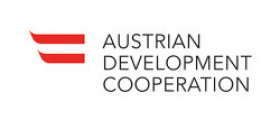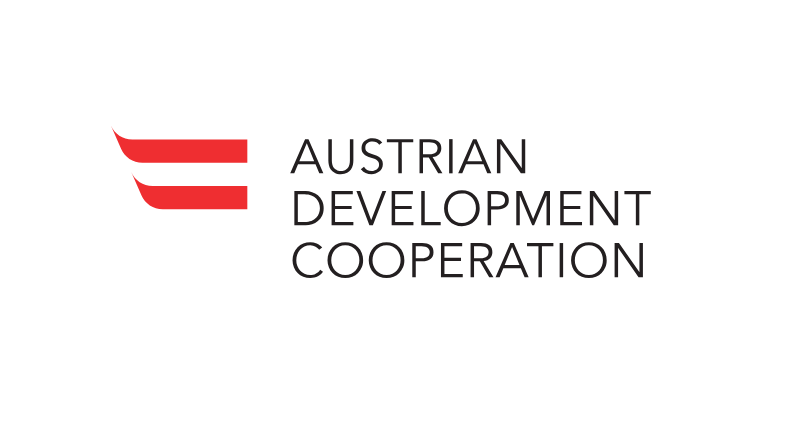HOLDING AND ANIMAL IDENTIFICATION AND REGISTRATION IN ARMENIA
SUPPORTED BY

Country/Region
Armenia/Shirak, Lori, Kotayk, Gegharkunik, Aragatsotn
Planned Project execution period:
1 November 2018 - 31 December 2020
Animal Identification and Registration is an industry-led trace-back system designed to help trace sources of animal health and food safety problems. The animal identification is intended to strengthen animal health surveillance in the country by identifying and tracking specific animals. Healthy animals and developed agriculture will provide consumer confidence and protect domestic and international markets. Animal identification and registration is critical in maintaining animal health in every herd, as well as for providing real-time information on animal movement and data required for recording of premises, barns, and summer grazing stations. It will enable reliable producers to access markets and prevent unsafe animal and animal products movement ensuring the quick and accurate handling of emergency situations. A driving factor behind animal identification is the need for food marketers. Currently, in some areas, consumers are ready to pay a premium for meat and animal products that have been tracked from birth. Therefore, food chain operators are intended to make necessary changes for their operations to comply with market requirements. This will allow the industry to be ready to protect and preserve domestic and international markets. Armenia needs to have a system in place that will protect cattle breeders and livestock farmers, so they can freely export and import products and animals around the world.
Given the above rationale Center for Agribusiness and Rural Development (CARD) Foundation in collaboration with RA Ministry of Agriculture (MOA) and its State Service for Food Safety (SSFS) agency proposes to support the veterinarians and all livestock farmers to improve the farm management through development and introduction of HAI&R system for Armenia.
Implementation of the proposed project will have the following impact: Improved animal health and animal breeding management leading to higher productivity of cattle and higher income of farmers.
To achieve this impact the project pursues the following outcome: Improved farm management at selected pilot farms through development and introduction of the Holding and Animal Identification and Registration system, ready for further nationwide replication. In its turn, after being implemented, the project will result in increase of the capacities of the veterinarians and farmers to effectively implement their duties as well as establish platform for the holding and animal identification and registration system in the future.
The following two outputs are expected to be achieved as a result of the project implementation:
Output 1: Awareness of project beneficiaries including state officials, livestock farmers, veterinarians etc. on animal identification and registration, farm management, environmental protection and animal welfare/protection raised
Output 2: Technical and organizational capacities of veterinarians and livestock farmers on animal identification and registration, farm management, environmental protection and animal welfare/protection strengthened.
Apr 25 2019
Kick-off meeting of the "Holding and Animal Identification and Registration (HAI&R) in Armenia
On February 21, 2019, in Radisson Blu Hotel Yerevan, the kick-off meeting of the "Holding and Animal Identification and Registration (HAI&R) in Armenia: Preparation Project”, financed by the Austrian development Agency (ADA) took place. The planned period for project execution is 1 November 2018 – 31 December 2020 Country/Region Armenia/Shirak, Lori, Kotayk, Gegharkunik, Aragatsotn Animal Identification and Registration is an industry-led trace-back system designed to help trace sources of animal health and food safety problems. The animal identification is intended to strengthen animal health surveillance in the country by identifying and tracking specific animals. Healthy animals and developed agriculture will provide consumer confidence and protect domestic...
Jun 16 2020
Animal Identification and Registration program was approved
I am pleased to mention, that due to the joint efforts of Armenian and Austrian specialists, with a first-year budget of 750 million, Animal Identification and Registration program was developed and approved, at the June 11 session of Government, which will start in the fall of this year. I would like to greet the Ministry of Economy and highlight that this question has been discussed for 30 years and finally, the revolutionary Government initiated, developed, and approved the Animal Identification and Registration program. This is a very important process, a reform that along with the operation of slaughterhouses will lay the foundation for the creation of a modern security system for milk and meat production in Armenia. Finally, the people responsible for the agricultural secto...
Feb 19 2020
???/ ???&?-??? Working Group Meeting
On February 14, 2020, ???/ ???&?-??? working group meeting took place at the CARD Foundation office. During the meeting, the following questions were discussed; • Adjacent to the Ministry of Economy, the status of the creation of Animal Identification and Registration department • The ownership and management of the ANI PASS system (the location, manager, etc.) • The creation of a web page for Animal Identification and Registration system • Making animation movies for public awareness purposes • Business process N 1. about the process of animal litter
Dec 02 2019
The workshop dedicated to the AIR program implementation in Armenia
CARD Foundation implemented a workshop with financing from the Austrian Development Agency (ADA), with support from RA Ministry of Economy and SSFS, dedicated to the implementation of AIR program in Armenia, on November 20, 2019, in Tsakhadzor Mariott hotel. During the workshop international experts Mr. Rudolf Moser from the Austrian AgrarMarkt Organization, Mr. Dragan Angelovski and Mr. Mikhail Sokhadze from FAO Georgia shared their experience. In Armenia, Animal breeding provides more than 50% gross output value. In 2018, animal breeding provided AMD 477.9 billion gross output, from which, more than AMD 280 billion is from cattle breeding, and the value of raw materials and products fluctuated around AMD 50 billion, this is why the implementation of AIR system is a priority. Consid...
Jan 23 2020
"Smart Farm" was opened in Azatan community
On November 29, 2019, another "Smart Farm" was opened in the Azatan community, Shirak region. The farm was built with financing from the CARD Foundation and the Austrian Development Agency (ADA) and support from the RA Ministry of Economy. The design of the farms has been developed for a free-range keeping of 12 animals. Adjacent to the farm a milking parlor is built, which enables milking 4 animals at the same time. In the links below, you can find the posts about the "Smart Farm" opening ceremony in the press. https://hetq.am/hy/article/110417 https://cutt.ly/6e9mgJR https://news.am/arm/news/547203.html https://cutt.ly/De9mlv8 http://nt.am/am/news/276440/ https://mineconomy.am/news/1927?fbclid=IwAR23YX44240pN-S4bQ3ky2bIBj...
May 07 2019
The Importance of Animal Registry and Numbering in Food Safety
On April 28, 2019, a seminar took place at the Agribusiness Teaching Center for the National Agrarian University students within the frames of the ABioNET project. Sergey Chakhmakhchyan, Animal Health and Food Safety expert of the project, funded by the Austrian Development Agency and implemented by the CARD Foundation, presented the importance of animal registry and numbering in food safety. In all countries animal identification and registration has a significant role in the development of economy, especially in agriculture. Historically, animal registration and identification system was established by organizations dealing with pedigree work, for data management of animal genetics, organizing livestock and veterinary work in farms and for improving epidemic situation by Veterinary Co...
May 10 2019
ADA/ HAI&R- II WG Meeting- “ANI PASS” software demonstration
During the meeting of the working group, Food Safety Inspection Body presented the “Ani Pass” multi-purpose integration software, directed to the Animal identification and Registration. Preliminary study showed that it complies with the states’ nowadays requirements, is a means of traceability and can be used in agriculture and food industry. The software has the opportunity of continuous update and modernization, complies with nowadays requirements and after some adjustments it can be applied in comprehensive implementation of Animal Identification and Registration project.
Jun 17 2019
The opening ceremony of "Smart Farm" demonstration farm in Stepanavan
On June 14, 2019, the opening ceremony of "Smart Farm" demonstration farm, implemented by CARD foundation and financed by the Austrian Development Agency, took place in Stepanavan, Lori Region. Officials from RA Ministry of Agriculture, Lori Provincial Administration, international and local organizations, as well as farmers from Marzes were present during the ceremony. The Smart Farms became a reality with funding from the Austrian Development Agency, and later with FAO’s support. The design has been implemented by T.A.H.G. GRIG company, through joint efforts with DeLaval. The farm got the name “Smart”, because the conditions of internal saturation and the territories provided for animals, comply with international standards and requirements. Durin...
Jul 08 2021
Training on the LATEST TECHNOLOGIES in YEGHEGNADZOR COMMUNITY
On June 24, 2021, within the frames of the Animal Identification and Registration (AIR) Project financed by the Austrian Development Agency, a training was held Yeghegnadzor community of the Vayots dzor region. The event aimed at introducing the Animal identification and registration system, Smart farms, animal holding, and care, as well as modern livestock technologies. The AIR Project experts presented the system and its significance, highlighting its role in ensuring food safety and preventing foodborne diseases. Among the topics touched were the problem of brucellosis, its causes, damage, and prevention measures. The President of the National Association of Veterinarians talked about the up-to-date methods of cattle breeding. He presented the management mechanisms of Armenian far...
May 07 2021
The First Two-stage Dialogue on Establishment of Sustainable Food Systems
On April 27, 2021, on the initiative of the RA Ministry of Economy of the, with the support of the UN Office in Armenia, the first two-stage dialogue on building sustainable food systems through inclusive value chains was held. The summit was attended by stakeholders in the field: public and private sector, international partners, scientific-academic circles, Non-governmental organizations, etc. After the plenary session, two parallel sessions were held, one of which was about the resilience of agri-food supply chains (Moderator: Vardan Urutyan, Rector of ANAU), and the other one was about food safety (Moderator: Sergey Chakhmakhchyan, Animal health, and food safety expert at CARD Foundation). Sergey Chakhmakhchyan presented the significance of the Animal Identi...










